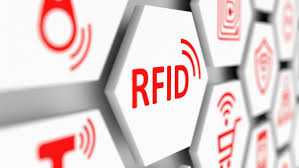The Best RFID Tag for Your Application
Choose a RFID tag for application is not a simple thing: price, frequency range, environment, size, attachment method, etc. The two different technologies of RFID are Active RFID and Passive RFID.
Active RFID:
Active RFID can be used in applications where multiple tagged products have to be monitored over larger areas, or scanned at a fast pace as they move through a particular facility.
Passive RFID:
In passive RFID systems the reader and reader antenna send a radio signal to the tag. The RFID tag then uses the transmitted signal to power on, and reflect energy back to the reader.
Frequently asked questions as below:
1. How far away the object should it be identified: a few centimeters, several meters, tens of meters?
2. Should we quickly identify a large number of objects?
3. What is the frequency range?
4. What is the environment? Cold, hot, sand, water, dirt, or an intensive laundering process?
Frequency Range
Similar to the other parts of an RFID system, RFID tags should be tuned to the correct frequency range for the country in which they are deployed. If the reader is transmitting on the 902-928 MHz band and attempts to read tags tuned to the 865-868 MHz band, the tags will not respond.
Environment
Consider all environmental factors and check them against the tag's specifications. There are many specialty RFID tags developed to survive extreme conditions of all sorts.
Read Range
Passive RFID is the most common. Size does matter. Generally speaking, the size of the tag is related to the read range. RFID tags are manufactured in different sizes and shapes so there will always be an RFID tag that meets your requirements.
Size
Each RFID tag is designed to be applied to a specific set or sub-set of materials. RFID tags generally work well on materials such as plastic, wood, or cardboard, but only certain tags have the ability to work well on more complex materials such as metal or glass. Tags that can be mounted on metal or glass usually cost more than typical RFID labels or inlays.
Different RFID tags are used in different environments. How to identify these RFID tags? RFID reader can solve this problem easily. RFID reader has different types, including handheld, fixed, desktop, etc. Rakinda provides all kinds of RFID readers to meet your various requirements. Please take a look at our RFID reader catalogues to find the best one.
Active RFID:
Active RFID can be used in applications where multiple tagged products have to be monitored over larger areas, or scanned at a fast pace as they move through a particular facility.
Passive RFID:
In passive RFID systems the reader and reader antenna send a radio signal to the tag. The RFID tag then uses the transmitted signal to power on, and reflect energy back to the reader.
Frequently asked questions as below:
1. How far away the object should it be identified: a few centimeters, several meters, tens of meters?
2. Should we quickly identify a large number of objects?
3. What is the frequency range?
4. What is the environment? Cold, hot, sand, water, dirt, or an intensive laundering process?
You nee to consider these factors to choose the best RFID tag
Frequency Range
Similar to the other parts of an RFID system, RFID tags should be tuned to the correct frequency range for the country in which they are deployed. If the reader is transmitting on the 902-928 MHz band and attempts to read tags tuned to the 865-868 MHz band, the tags will not respond.
Environment
Consider all environmental factors and check them against the tag's specifications. There are many specialty RFID tags developed to survive extreme conditions of all sorts.
Read Range
Passive RFID is the most common. Size does matter. Generally speaking, the size of the tag is related to the read range. RFID tags are manufactured in different sizes and shapes so there will always be an RFID tag that meets your requirements.
Size
Each RFID tag is designed to be applied to a specific set or sub-set of materials. RFID tags generally work well on materials such as plastic, wood, or cardboard, but only certain tags have the ability to work well on more complex materials such as metal or glass. Tags that can be mounted on metal or glass usually cost more than typical RFID labels or inlays.
Different RFID tags are used in different environments. How to identify these RFID tags? RFID reader can solve this problem easily. RFID reader has different types, including handheld, fixed, desktop, etc. Rakinda provides all kinds of RFID readers to meet your various requirements. Please take a look at our RFID reader catalogues to find the best one.

